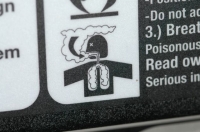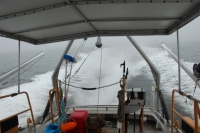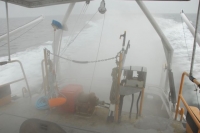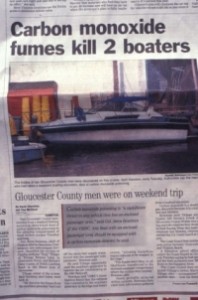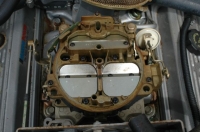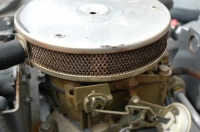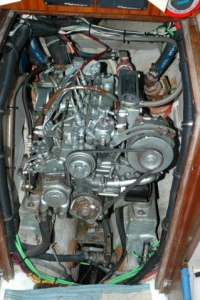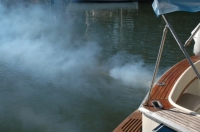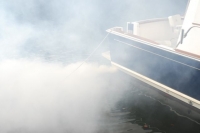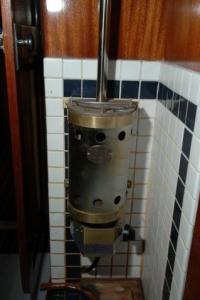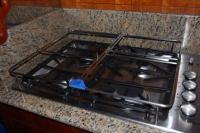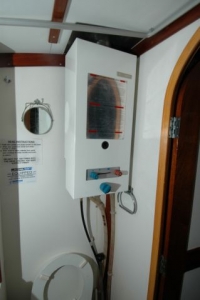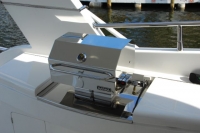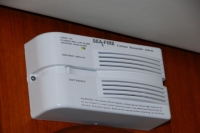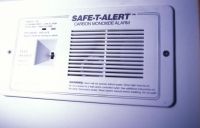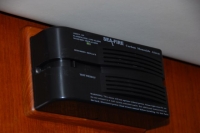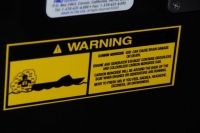Carbon Monoxide Poisoning
After receiving the following letter from a consulting client a discussion on the subject of CO poisoning seemed in order.
Steve,
After recalling reading something on the dangers of CO poisoning, especially on boats, I tried to recall if we have hardwired alarms on my boat. For the life of me I can’t recall. I assume we could use a standard alarm in the cabin but is there some concern about excessive false alarms from the additives in diesel fuel?
Please enlighten me……
Whether you have a gas or diesel engine, CO poisoning is a danger to you and your passengers and proper CO detection is a necessity.
Carbon monoxide or CO, not to be confused with CO2, which is carbon dioxide, is a colorless, odorless, tasteless gas that weighs roughly the same as ordinary air, so, unlike LP it often becomes evenly distributed within a cabin or other confined area.
CO is highly poisonous by virtue of its ability to, among other things; prevent red blood cells from transporting oxygen to the body’s tissues. Because it cannot be readily sensed, other than by the symptoms, it produces everything from headaches and flu-like conditions (these can easily be misdiagnosed or ignored) to convulsions and unconsciousness (at which point it’s often too late to take action), it’s especially dangerous.
Underway, the manner in which a vessel is operated can increase the amount of exhaust fumes, and CO, that are inducted into the cabin. This vessel is running into the wind in the photo on the left, with the exhaust smoke clearly visible trailing behind. The same vessel running with the wind, on the right, is virtually enveloped in exhaust gasses. The phenomenon is commonly referred to as the “station wagon effect”.
Several hundred people die per year as a result of CO poisoning in the United States alone, some of which are nearly always aboard recreational or commercial vessels. Because of the airtight nature of boats and the near universal presence of CO producing devices, primarily stoves, heaters, engines and generators, the occupants of these vessels are at especially high risk for CO poisoning.
The vessel shown in the above newspaper article was not equipped with a CO detector. Had it been, it’s likely the occupants would not have died.
CO is produced by incomplete combustion of carbon-containing fuels, including gasoline, wood, charcoal and LP gas (the “cleaner” the combustion, the less CO that is produced, new gasoline automobiles that are equipped with catalytic converters produce considerably less CO than their non-catalyst equipped ancestors).
Gasoline engines produce CO. The less efficiently they are operating, the more CO they produce. Therefore, engines in poor tune or those that are inefficiently loaded produce more CO. Engines equipped with carburetors, like those shown above, as opposed to fuel injection, are more likely to be out of tune or have poor mixture and thus they are more likely to produce excess CO. However, all internal combustion engines produce CO and therefore should be considered sources of this lethal gas regardless of tune or fuel delivery system.
Diesel engines produce far less CO than their gasoline cousins; I’ve been unable to find a single case of CO poisoning from a diesel engine. Regardless of CO content, inhalation of diesel fumes in sufficient quantity can be harmful and even lethal.
Contrary to popular belief, diesel engines do produce CO, just not very much of it. Diesel exhaust contains about 0.5% CO, compared with a non-catalyst equipped gasoline engine’s 7-11% CO (roughly 20 times as much), the latter being well within the range of lethality depending upon the duration of exposure. Diesel exhaust may, in high enough concentrations, still be harmful and even toxic, however, by means other than CO poisoning.
The presence of smoke, or lack thereof, is not a determining factor for the presence of CO. Engine’s whose exhaust is invisible to the naked eye can and often do produce lethal concentrations of CO.
The insidiousness of CO poisoning and the way it works in conjunction with LP gas (liquefied petroleum gas) fueled gear is of particular interest. As the quantity of CO within a vessel’s cabin increase as a result of the burning of LP, the efficiency or completeness with which the appliance’s flame burns diminishes, which produces still more CO, which compromises the appliances flame and so on and so on. It’s also important to note that the effects are cumulative, i.e. exposure to relatively low concentrations of CO over long periods may be as harmful as exposure to high concentrations over shorter periods.
Galley ranges and heaters that operate on LP gas are among the most commonly used CO producers. Be certain your equipment is in proper working order. When the flame burns blue, it’s producing less CO then when it burns yellow.
If you suspect you or someone you encounter is suffering from CO poisoning, the treatment is moving immediately to fresh air and then administration of 100% oxygen. The best solution to CO poisoning, however, is prevention, don’t let it happen to you and now that’s easier than ever. CO detectors are readily available and should be installed aboard every boat, in every accommodation space including sleeping quarters or where folks may nap or just fall asleep such as the saloon or pilothouse.
On demand or “instant” LP water heaters, like the one shown above, that are designed for domestic/home or apartment use should not be used aboard your boat. Devices of this sort have been responsible for cruisers’ deaths caused by acute CO poisoning. If your vessel is equipped with one of these, it and the installation should meet all the guidelines set forth in the most recent edition of the American Boat and Yacht Council’s Standards and Technical Information Reports, chapters A-1, Marine Liquefied Petroleum Gas (LPG) Systems and A-26, LPG and CNG Fueled Appliances.
The newest range of CO detectors are virtually immune to false alarms caused by paint, upholstery and fiberglass out gassing (although not impossible, it’s unlikely that common additives in diesel fuel either increase or decrease the potential for a CO detector to sound “false alarm”, all alarms should be treated as genuine), so if you had one years ago and “decommissioned” it because of its propensity to sound when no CO appeared to be present, it’s time to reconsider that decision. Finally, you may be thinking, I don’t have LP gas aboard and if diesels produce virtually no CO why do I need a CO detector on my diesel boat? The answer is you do need one and here’s why. Imagine you are docked or rafted up adjacent to another boat (assume its fuel source is gasoline) and its engine or generator is running. It’s perfect sleeping weather; just cool enough for a light blanket so you head for your bunk, leaving your ports or deck hatches open. You can hear water lapping at the hull, the boat rocks gently and all is right with the world. However, unbeknownst to you, a light breeze is blowing the exhaust from the running engine into your cabin through the open ports. Voila, you’ve just become a statistic. Every boat with an enclosed cabin, regardless of its equipment or fuel source, needs CO detectors in every accommodation space.
Don’t rule out the gas grill as a CO source, particularly if used in a curtained or enclosed bridge area. Ensure sufficient ventilation, particularly if a bow-on wind is creating a station wagon effect, which often occurs for vessels at anchor.
Unlike LP detectors, many vessel owners prefer to wire CO detectors to the load or output side of the vessel’s main house battery switch, which means they are energized only when the battery switch is ON (it’s likely that this switch will be on when ever people are aboard), through an appropriately sized fuse or circuit breaker. There’s no sense in the CO detector operating when no one is aboard, particularly of the vessel is moored because the CO detector does use battery power, which could deplete them given enough time. If wired in this manner, a placard should be placed adjacent to the battery switch indicating that switching it off deactivates the CO detector. If your vessel is never left without a charge source present, either dockside power or a solar array, then it’s best to wire the CO detector to the line or “always on” side of the battery switch, again, using an appropriately sized fuse. Wired in this manner, the CO detector is never off unless its fuse is removed.
CO detectors are available in a variety of shapes, sizes and colors. The most desirable feature is their cost, they are inexpensive and thus there’s no reason for not having one or more aboard. Most importantly, they must be replaced in accordance with the manufacturer’s guidelines.
I prefer units that rely on the vessel’s own power rather than internal batteries. After all, are you going to cut short your cruise or vacation because the CO detector’s 9 volt battery is dead and you have no replacements? And, while a CO detector whose battery is dying will often chirp for some time, if this occurs while you are away from the boat you’ll never know.
Like the LP sniffer, the CO detector’s circuit breaker must not be located on the main electrical panel, or anywhere else for that matter, where it could too easily be turned off. Many professional installers use fuses (make sure they are well labeled and spares are available) rather than circuit breakers for CO and LP detectors in order to prevent these important devices from being inadvertently turned off with other circuit breakers. Neither of these detectors should ever be wired through an ordinary on-off switch.
Finally, CO detectors do wear out, depending upon the manufacturer, this could be between 3 and 5 years after their initial installation. Some can be returned to the manufacturer for “refurbishment” while others simply need to be replaced. If you don’t know how old yours is (if it came with a used vessel for instance), or if you are unsure about its operation, replace it, they are comparatively inexpensive, often well under $100.
Carbon monoxide poisoning is not something to be taken lightly, as the skipper few responsibilities are as important as installing and ensuring the proper operation of a detector or detectors aboard your boat.
